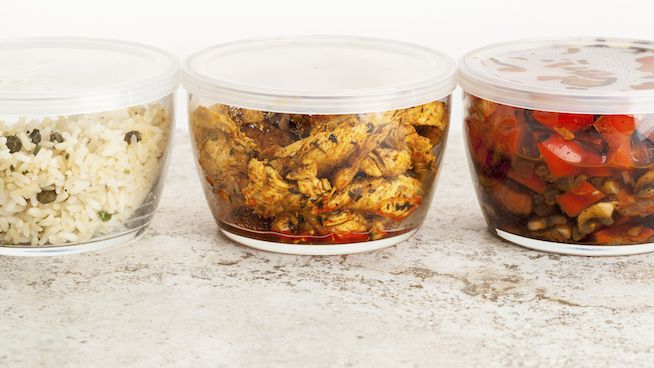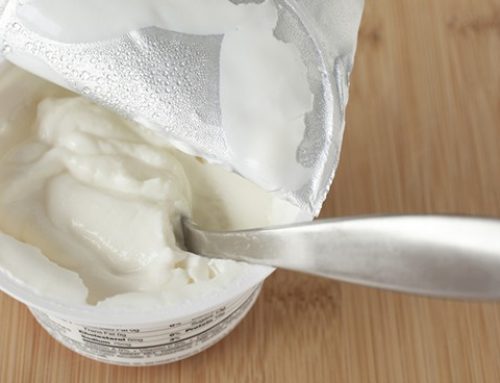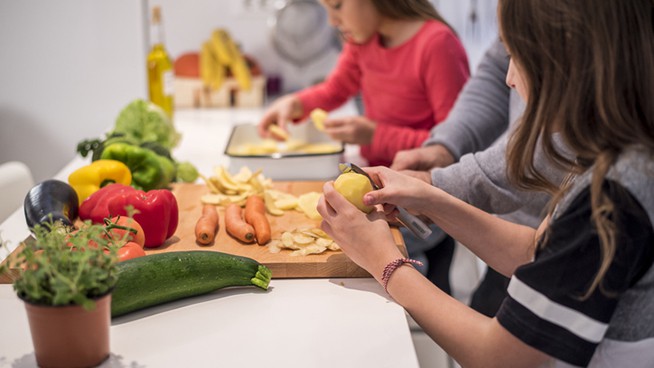How to Eat Healthy at a Chinese Restaurant (Dining In or Taking Out)
After a long day of class, practice and the gym, grabbing some take-out from the local Chinese restaurant is a fun and quick dinner option. However, although it’s great for the taste buds, most Chinese food options are diet-defying, even for those who are just trying to maintain their weight. Its great taste and convenience typically translates to excess saturated fat, sodium, MSG and other preservatives.
But if Chinese food is your favorite splurge, don’t worry. If you follow these tips, it’s not impossible to turn your favorite takeout into a quick and healthy weeknight meal. (Got time? Make your own: Chicken Stir-Fry With Brown Rice Recipe.)
Get the sauce on the side
You can easily ruin a perfectly good dish with a high-sugar, high-sodium sauce covering all those great vegetables. If you can, get the sauce on the side and use a small serving for flavor without completely overdoing the calories. You’re the customer, so you’re in charge. Don’t be afraid to ask. If the restaurant seems reluctant, ask them to cook it in half the amount of sauce to avoid some calories. Some better sauces to choose include Siracha, light soy, hoisin, oyster and hot mustard. Try to limit intake of thick sauces like sweet and sour and General Tso’s: these are made with cornstarch and sugar.
Opt for steamed when choosing a main dish
A perfectly healthy order is steamed chicken, shrimp or tofu with vegetables. That could be close to what you make at home, and again, putting the sauce on the side keeps the meal pretty simple. Try to avoid items that are battered or fried. Learn the menu lingo. Any of the following are good options: “jum” means poached, “chu” means broiled, “kow” means roasted and “shu” means barbecued, lightly stir-fried, dry stir-fried or braised. Remember, many meat selections are floured or breaded. Ask your server if the chef can prepare them without frying or breading.
Choose brown rice
Brown rice is better for you than white rice, because it has fiber to help keep you full. Still, white rice is an okay option (its calories are comparable to brown rice). Just avoid fried rice with excess butter and sodium. Always ask for rice on the side, and serve yourself close to one cup. Use the rest in a stir-fry for lunch tomorrow. An even better option if you’re going home with takeout is to ditch the side of white rice and make your own at home. Looking for a healthy stir-fry recipe you can make at home? Check out a chicken stir-fry recipe from the New York Giants.
Avoid unnecessary sides
Speaking of sides, this is where the calories can really add up. Try to just stick to your main meal and avoid ordering sides and appetizers such as egg rolls, spare ribs and Lo Mein. If you want an appetizer, go with a low-calorie option like wonton or miso soup, steamed vegetable dumplings or spring rolls.
Use chopsticks
Chopsticks make it easy to slow down your eating and help you practice portion control. Especially when it comes to rice, it’s much easier to overeat when using a fork or spoon. Also, using chopsticks helps you avoid scooping up as much oil from the dish.
RECOMMENDED FOR YOU
How to Eat Healthy at a Chinese Restaurant (Dining In or Taking Out)
After a long day of class, practice and the gym, grabbing some take-out from the local Chinese restaurant is a fun and quick dinner option. However, although it’s great for the taste buds, most Chinese food options are diet-defying, even for those who are just trying to maintain their weight. Its great taste and convenience typically translates to excess saturated fat, sodium, MSG and other preservatives.
But if Chinese food is your favorite splurge, don’t worry. If you follow these tips, it’s not impossible to turn your favorite takeout into a quick and healthy weeknight meal. (Got time? Make your own: Chicken Stir-Fry With Brown Rice Recipe.)
Get the sauce on the side
You can easily ruin a perfectly good dish with a high-sugar, high-sodium sauce covering all those great vegetables. If you can, get the sauce on the side and use a small serving for flavor without completely overdoing the calories. You’re the customer, so you’re in charge. Don’t be afraid to ask. If the restaurant seems reluctant, ask them to cook it in half the amount of sauce to avoid some calories. Some better sauces to choose include Siracha, light soy, hoisin, oyster and hot mustard. Try to limit intake of thick sauces like sweet and sour and General Tso’s: these are made with cornstarch and sugar.
Opt for steamed when choosing a main dish
A perfectly healthy order is steamed chicken, shrimp or tofu with vegetables. That could be close to what you make at home, and again, putting the sauce on the side keeps the meal pretty simple. Try to avoid items that are battered or fried. Learn the menu lingo. Any of the following are good options: “jum” means poached, “chu” means broiled, “kow” means roasted and “shu” means barbecued, lightly stir-fried, dry stir-fried or braised. Remember, many meat selections are floured or breaded. Ask your server if the chef can prepare them without frying or breading.
Choose brown rice
Brown rice is better for you than white rice, because it has fiber to help keep you full. Still, white rice is an okay option (its calories are comparable to brown rice). Just avoid fried rice with excess butter and sodium. Always ask for rice on the side, and serve yourself close to one cup. Use the rest in a stir-fry for lunch tomorrow. An even better option if you’re going home with takeout is to ditch the side of white rice and make your own at home. Looking for a healthy stir-fry recipe you can make at home? Check out a chicken stir-fry recipe from the New York Giants.
Avoid unnecessary sides
Speaking of sides, this is where the calories can really add up. Try to just stick to your main meal and avoid ordering sides and appetizers such as egg rolls, spare ribs and Lo Mein. If you want an appetizer, go with a low-calorie option like wonton or miso soup, steamed vegetable dumplings or spring rolls.
Use chopsticks
Chopsticks make it easy to slow down your eating and help you practice portion control. Especially when it comes to rice, it’s much easier to overeat when using a fork or spoon. Also, using chopsticks helps you avoid scooping up as much oil from the dish.











